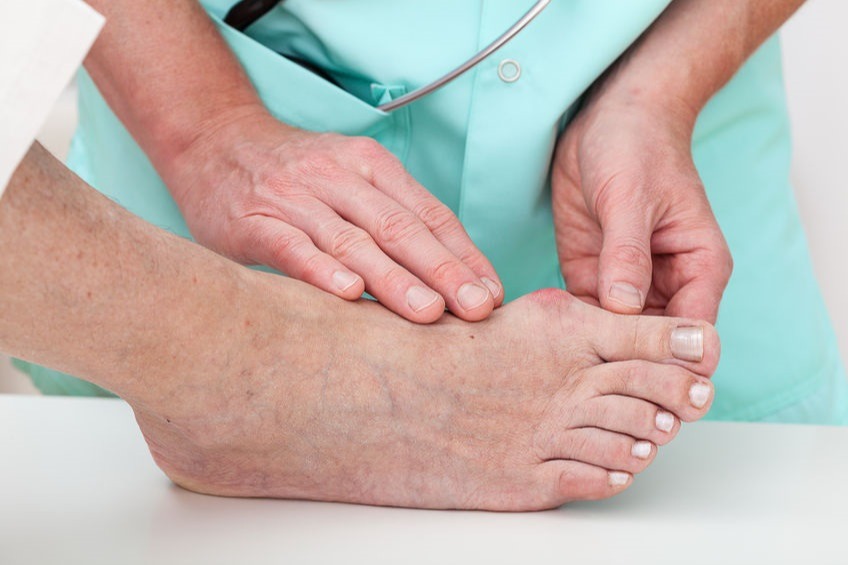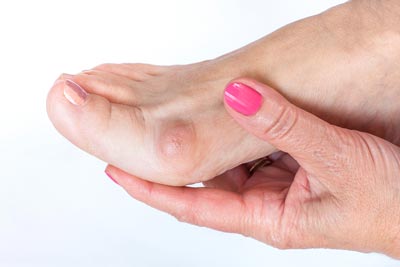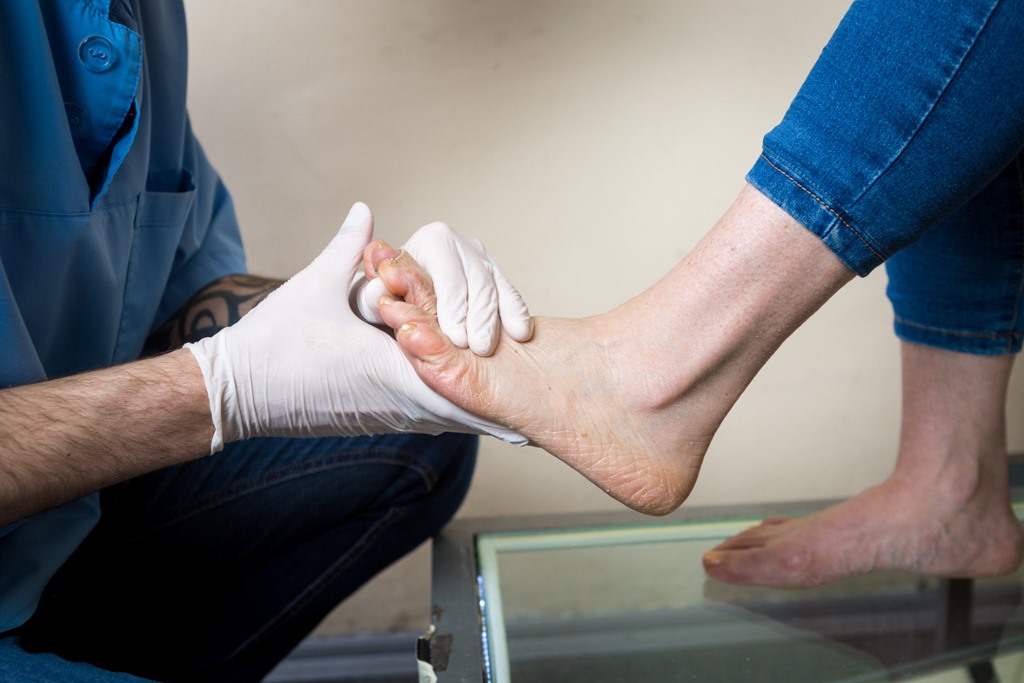Natural Remedies for Bunion Relief: Tips for Reducing Bunion Pain
Suffering from bunion pain can be more than just a mere inconvenience; it’s a daily challenge affecting your mobility, choice of footwear, and overall quality of life. But before you consider drastic measures like surgery, have you explored the realm of natural remedies? In our latest post, “Natural Remedies for Bunion Relief: Tips for Reducing Bunion Pain,” we’re excited to guide you through a holistic approach to managing this common foot ailment. From simple lifestyle adjustments to innovative home remedies, we’ll uncover effective strategies to alleviate bunion discomfort and help you regain your step with confidence. Join us as we explore the path to foot relief that Nature herself approves.
Understand Your Feet: The Basics of Bunions.
To treat bunions, it’s crucial to grasp the essentials about bunions – their nature and formation. In essence, bunions manifest as bony protrusions at the joint of the base of the big toe. This condition prompts the big toe to angle in towards the other toes. Factors such as genetic predisposition, wearing ill-fitting shoes, or arthritis can trigger the development of bunions. These factors lead to symptoms like pain, rigidity, and swelling in the impacted region. Early detection and understanding of the contributing elements are key to preventing bunions and choosing apt treatment methods to alleviate pain and unease.

Bunion Treatment
The Importance of Footwear in Bunion Management
Making smart choices in your daily shoe selection can play a crucial role in both preventing the progression of bunions and relieving the discomfort they cause. Wearing shoes that cramp your toes into tight spaces can aggravate the pain associated with bunions by placing undue stress on your feet. On the flip side, shoes designed with a spacious and flexible toe area, crafted from materials that are forgiving, can dramatically lessen the strain on your bunion. Opting for orthopedic footwear engineered to support the natural structure of your foot and evenly distribute your body weight can offer added benefits. For those requiring extra care, customized orthotics might be the way to go, providing targeted support and promoting correct foot posture. By emphasizing the importance of comfort and a proper shoe fit in your everyday life, you’re taking a simple, yet impactful, step toward mitigating bunion discomfort and enhancing your overall well-being.
Orthotic Solutions: Beyond the Shoe
While the right footwear lays a solid foundation for managing bunion pain, exploring custom orthotic solutions beyond conventional shoes can further enhance comfort and relief. Orthotic devices, ranging from simple over-the-counter pads to custom-fitted supports, are designed to redistribute pressure away from the bunion, correcting the alignment of the foot. For instance, bunion pads can cushion the painful area, while splints worn at night may help in gradually realigning the big toe to its natural position. Toe separators can also be beneficial by providing the necessary space between toes, reducing stress on the bunion. Consultation with a podiatrist can help determine the most appropriate orthotic solutions tailored to your specific needs, offering a personalized approach to bunion management and pain reduction.
Stretching and Strengthening: Exercises for Bunion Relief
Making specific exercises a part of your everyday routine is pivotal in mitigating discomfort from bunions and averting further exacerbation. Exercises that stretch the big toe play a vital role in enhancing flexibility, diminishing stiffness, and broadening movement range, directly addressing the pain linked to bunions. A practical example includes manually adjusting the big toe to its proper stance for several minutes each day, which can progressively foster the correct toe alignment. Conversely, strengthening routines aim at fortifying the muscles surrounding the big toe and the foot’s arch. This reinforcement aids in maintaining the toe’s alignment and evenly distributing pressure while moving. Engaging in straightforward activities, such as lifting marbles or scrunching a cloth with your toes, can effectively bolster the foot’s muscle strength. Consistently performing these exercises can markedly alleviate bunion-related discomfort and improve overall foot health.
Home-Based Solutions for Quick Bunion Comfort
Seeking relief from bunion discomfort? Consider leveraging the power of easy-to-implement home remedies for fast alleviation. One highly recommended tactic is to apply ice to the sore spot to lessen swelling and ease pain. Wrapping a cold pack around the area for about 10-15 minutes multiple times throughout the day, particularly after long durations of standing or walking, can offer notable relief. Additionally, immersing your feet in a warm Epsom salt bath can also be remarkably soothing, not just for the muscles but for reducing the inflammation surrounding the bunion. A simple yet effective strategy includes elevating your feet whenever possible at the day’s end to help decrease swelling, enhance circulation, and relieve the discomfort that comes with bunions. These do-it-yourself solutions provide practical, immediate pain management tactics, supporting overall foot health and comfort strategies in the long haul.

Natural Remedies for Bunion Relief
Nutrition and Hydration: Fuel for Healthy Feet
Optimal health touches every part of your body, including your feet. Addressing and preventing the discomfort of bunions involves more than just external care; it hinges significantly on what you consume. Adopting a diet rich in foods that fight inflammation can be a game-changer for reducing the swelling and pain bunion sufferers often experience. Consider incorporating omega-3-rich foods like chia seeds, walnuts, and salmon into your meals, as they are known warriors against inflammation.
Vitamins play their part too; Vitamin D is essential for strong bones, while Vitamin E helps maintain the skin’s resilience, both crucial in warding off bunion-related issues.
But food is only half the equation. Ensuring you’re adequately hydrated is key to keeping your joints lubricated and your foot tissues flexible, which can ease pain and enhance mobility. Strive to drink at least eight glasses of water every day, and don’t forget to add hydrating fruits and vegetables such as cucumbers, strawberries, and watermelon to your diet.
When You Should Seek Specialist Care for Bunions
Although various methods can ease bunion discomfort at home, there are times when the input of a foot healthcare professional is essential. If you find yourself in continuous pain regardless of the home treatments and lifestyle changes you’ve tried, it’s time to consider an appointment with a podiatrist or an orthopedic expert. Furthermore, when a bunion starts to interfere significantly with your day-to-day life or makes walking challenging, this signals the need for experienced medical intervention. Health experts have access to more intensive treatments, including medication stronger than what’s available over the counter, injections of corticosteroids, and surgical options for more extreme cases. Seeking timely specialist advice can stop bunions from worsening and help sidestep further issues, underscoring the importance of professional evaluation for anyone facing ongoing or severe discomfort.
Building a Long-Term Bunion Management Plan
Undertaking a comprehensive approach to bunion care is the key to enjoying lasting comfort and preventing the ailment from worsening. A dynamic, all-encompassing strategy that includes making smart choices in daily habits, ensuring your feet receive the care they deserve, and keeping regular health checks can make a significant difference.
To begin with, choosing shoes that are not just fashionable but also offer enough space for your toes can drastically reduce any aggravation of your bunions. Integrating simple foot exercises and stretches into your daily regimen can bolster foot strength and flexibility. This is not only essential for alleviating pain but also for halting the progress of bunions.
For moments when you experience acute discomfort, home remedies come to the rescue. Applying ice or soaking your feet in Epsom salt can provide quick relief from pain and swelling.
However, it’s crucial to stay vigilant about the state of your bunions. Should there be any noticeable changes or a spike in pain levels, reaching out to a foot and ankle specialist for a revised management plan is advisable? Sometimes, a tweak in your orthotic support or considering new therapies might be the step forward. Keeping your weight in check also plays a role in lessening undue strain on your feet, easing the bunion management process.
Last but not least, continuous learning about foot wellness and the latest in bunion care will arm you with the knowledge to manage your condition more effectively. The world of podiatric medicine is constantly advancing, offering new possibilities for better care.

Bunion Pain Relief
Conclusion
Foot treatment involves a combination of immediate relief strategies, long-term care, and sometimes, professional medical intervention. Implementing daily exercises, opting for comfortable footwear, and utilizing home remedies can significantly alleviate pain and prevent the condition from worsening. Nonetheless, it’s crucial to recognize when to seek the expertise of healthcare professionals to explore more advanced treatments. A comprehensive approach, including lifestyle modifications, nutrition, hydration, and regular foot care, stands as the foundation for maintaining foot health and mitigating bunion-related discomfort. By taking proactive steps and adhering to a tailored bunion management plan, individuals can achieve lasting relief, ensuring an improved quality of life and the ability to engage freely in daily activities without the hindrance of foot pain.
Flagstaff Foot Doctors: Anthony Rosales DPM
https://www.google.com/maps?cid=8835841318590452161
421 N Humphreys St, Flagstaff, AZ 86001, United States
(928) 774-4825
https://flagstafffootandankle.com/
